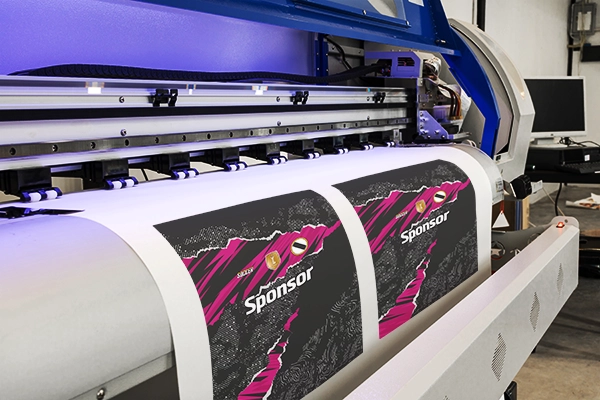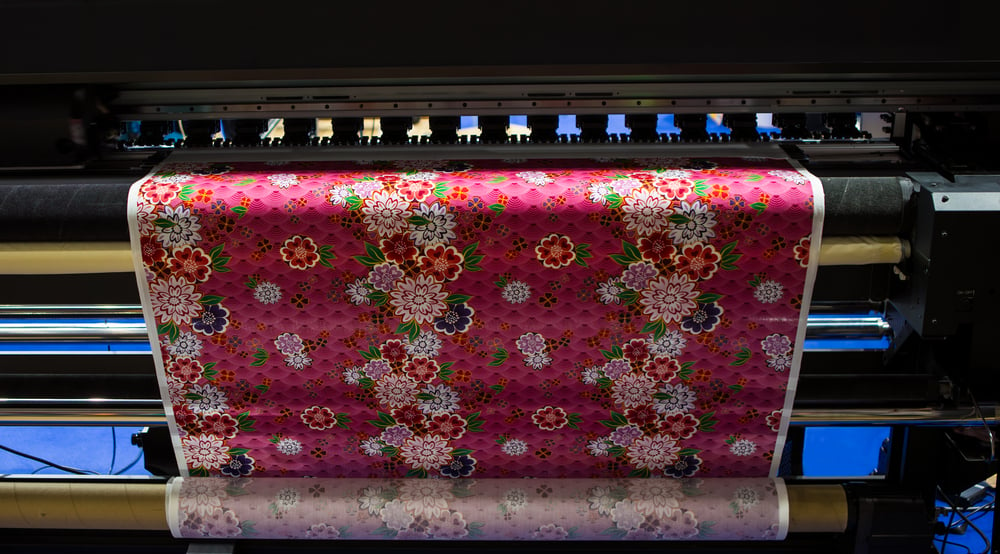The Best Overview to Sublimation Printing for Custom Apparel
The Best Overview to Sublimation Printing for Custom Apparel
Blog Article
A Comprehensive Overview to the Various Types of Towel Printing Methods
Each technique, from the precise craftsmanship of block printing to the fast effectiveness of display printing, serves unique purposes and supplies distinct advantages. Digital printing's flexibility and environmental awareness stand in plain comparison to the swift personalization of heat transfer printing.
Block Printing
Block Printing, among the earliest approaches of fabric decor, has an abundant background that goes back to old people. Coming from in China around 220 A.D., this strategy later spread to India and at some point Europe. The procedure involves carving detailed styles right into wooden blocks, which are then dipped in color and pressed onto material to create patterns. This technique is remarkable for its capability to produce very detailed and repeated layouts.
The accuracy and workmanship associated with block printing make it a labor-intensive procedure, however it likewise permits a high level of modification. Artisans can develop one-of-a-kind patterns by integrating different blocks or differing the application of dye. This versatility has added to the enduring popularity of block printing in both modern and typical textile style.
Block printing is specifically valued for its visual high qualities, consisting of the small variants in pattern and color that arise from the hand-printing procedure. These flaws lend a distinct character to every item, differentiating it from mass-produced materials. Regardless of breakthroughs in contemporary printing innovations, block printing remains a valued method, commemorated for its historical relevance and imaginative value.
Screen Printing
Display printing, another popular textile decor method, has actually changed the sector with its effectiveness and adaptability. This method entails developing a stencil, called a display, and utilizing it to use layers of ink on the printing surface. Each color in the layout needs a different display, which enables for detailed and vibrant multi-colored prints.

Among the crucial advantages of screen printing is its versatility to numerous sorts of materials, consisting of cotton, polyester, and blends. This technique is particularly suitable for large-volume orders as a result of its cost-effectiveness and speed. The resilience of the prints is an additional considerable advantage, as the ink bonds well with the material, guaranteeing durable designs that hold up against multiple laundries.
When dried, the layout is transferred onto the emulsion-coated display using a UV light resource. Ink is then pushed with the pattern onto the material using a squeegee.
Screen printing is widely made use of in the fashion business, promotional products, and personalized garments. Its capability for high-grade, in-depth prints safeguards its standing as a keystone technique in fabric printing.
Digital Printing
Digital printing has actually swiftly arised as a cutting-edge strategy in the fabric sector, leveraging sophisticated modern technology to create high-resolution designs directly onto textile. Unlike conventional methods, electronic printing uses inkjet printers to deposit pigment or dye-based inks onto textiles, making it possible for elaborate and vibrant patterns with a remarkable degree of detail and shade accuracy.
Among the key advantages of digital printing is its adaptability. This technique permits on-demand printing, which significantly decreases waste and decreases stock costs. In addition, it sustains short runs and personalized styles, making it excellent for bespoke projects and limited-edition collections. The elimination of screens and other arrangement needs better improves efficiency, decreasing manufacturing time and labor costs.
In addition, digital printing is eco-friendly. heat transfer vinyl printing. It uses water-based inks and requires less water and power contrasted to conventional techniques, aligning with lasting methods. The precision of digital printing also permits the use of a larger range of try these out fabrics, consisting of cotton, silk, polyester, and blends, ensuring convenience across numerous applications
Warmth Transfer Printing
Exactly how does warm transfer printing change textile style? Warmth transfer printing involves using warm and pressure to transfer a design from a specifically formulated paper onto material.
Among the key advantages of warm transfer printing is its ability to produce premium, detailed pictures quickly and effectively. It is especially appropriate for small manufacturing runs and custom-made orders, making it a preferred choice for tailored clothing and promotional items. Additionally, this technique is flexible, fitting various types of materials including cotton, polyester, and blends.
In addition, warmth transfer printing is relatively economical contrasted to other techniques, as it needs minimal configuration and lower first investment - DTF printing. This price, paired with its ability for creating vivid, long lasting prints, highlights its critical duty in modern material design

Dye Sublimation Printing
Dye sublimation printing, helpful hints an advanced textile printing method, offers unequaled vibrancy and long life for designs on numerous synthetic textiles. The published transfer paper is then positioned on the fabric, and both are subjected to high heat and pressure making use of a heat press.
One of the vital advantages of color sublimation printing is its capacity to create continuous-tone prints with intricate details and vivid colors. Unlike other printing methods, the dye becomes part of the textile rather than resting on top of it, resulting in a soft and breathable coating.
Verdict
In recap, cloth printing methods each deal special advantages tailored to various requirements and applications. Block printing is respected for its artisanal top quality, while display printing is useful for high-volume manufacturing. Digital printing supplies adaptability and environmental benefits, whereas heat transfer printing is ideal for fast customization. Dye sublimation printing creates vibrant, sturdy styles on synthetic materials. The diversity and development within these approaches highlight the dynamic and evolving nature of the cloth printing sector.
Each method, from the precise workmanship of block printing to the rapid performance of display printing, serves one-of-a-kind objectives and supplies unique benefits. Digital printing's adaptability and ecological consciousness stand in raw contrast to the swift personalization of warmth check my reference transfer printing. Regardless of advancements in modern printing modern technologies, block printing continues to be a treasured technique, commemorated for its historic importance and imaginative value.
Dye sublimation printing, an innovative textile printing method, supplies unrivaled vibrancy and longevity for designs on different synthetic fabrics. Digital printing gives flexibility and ecological benefits, whereas heat transfer printing is suitable for rapid personalization.
Report this page